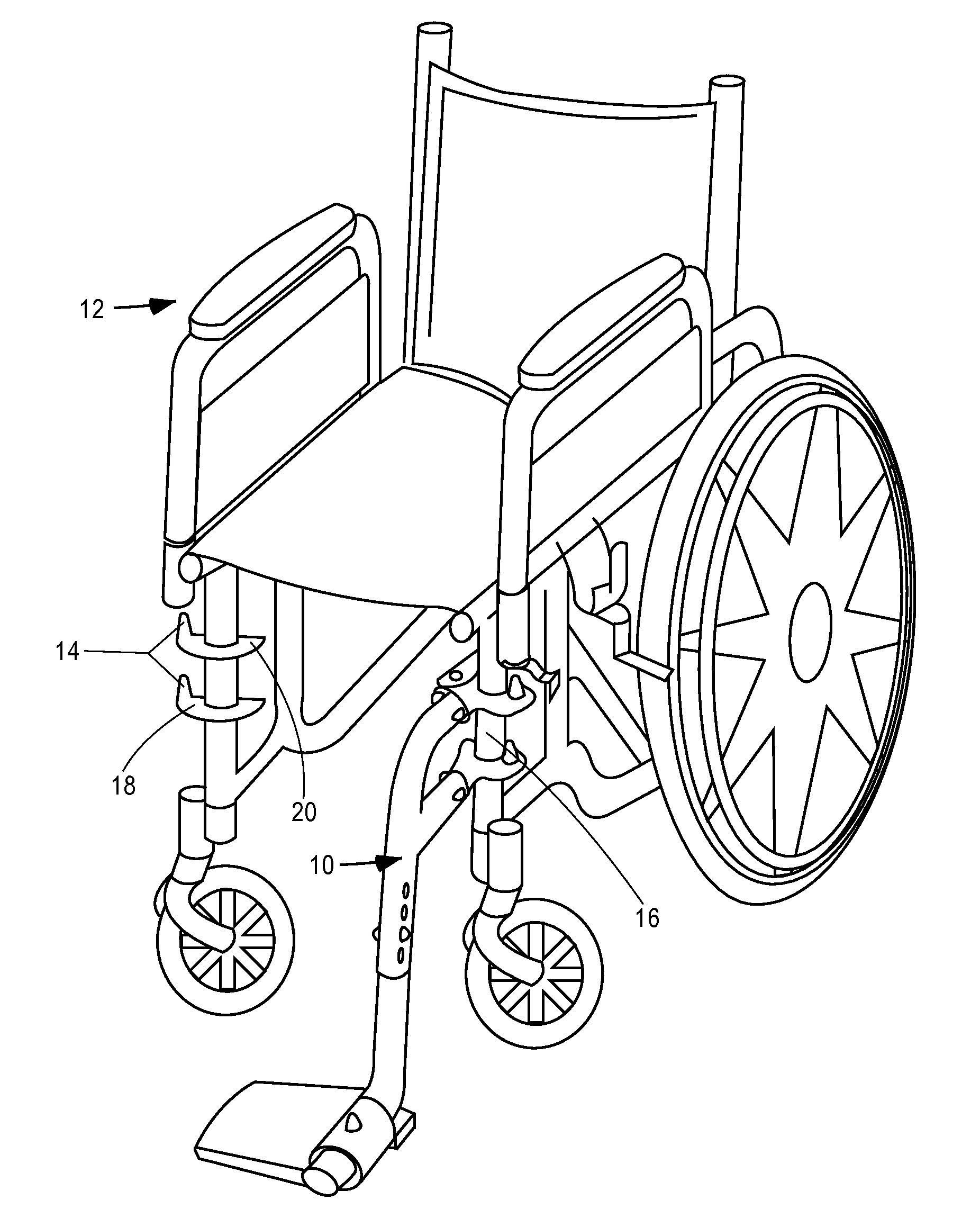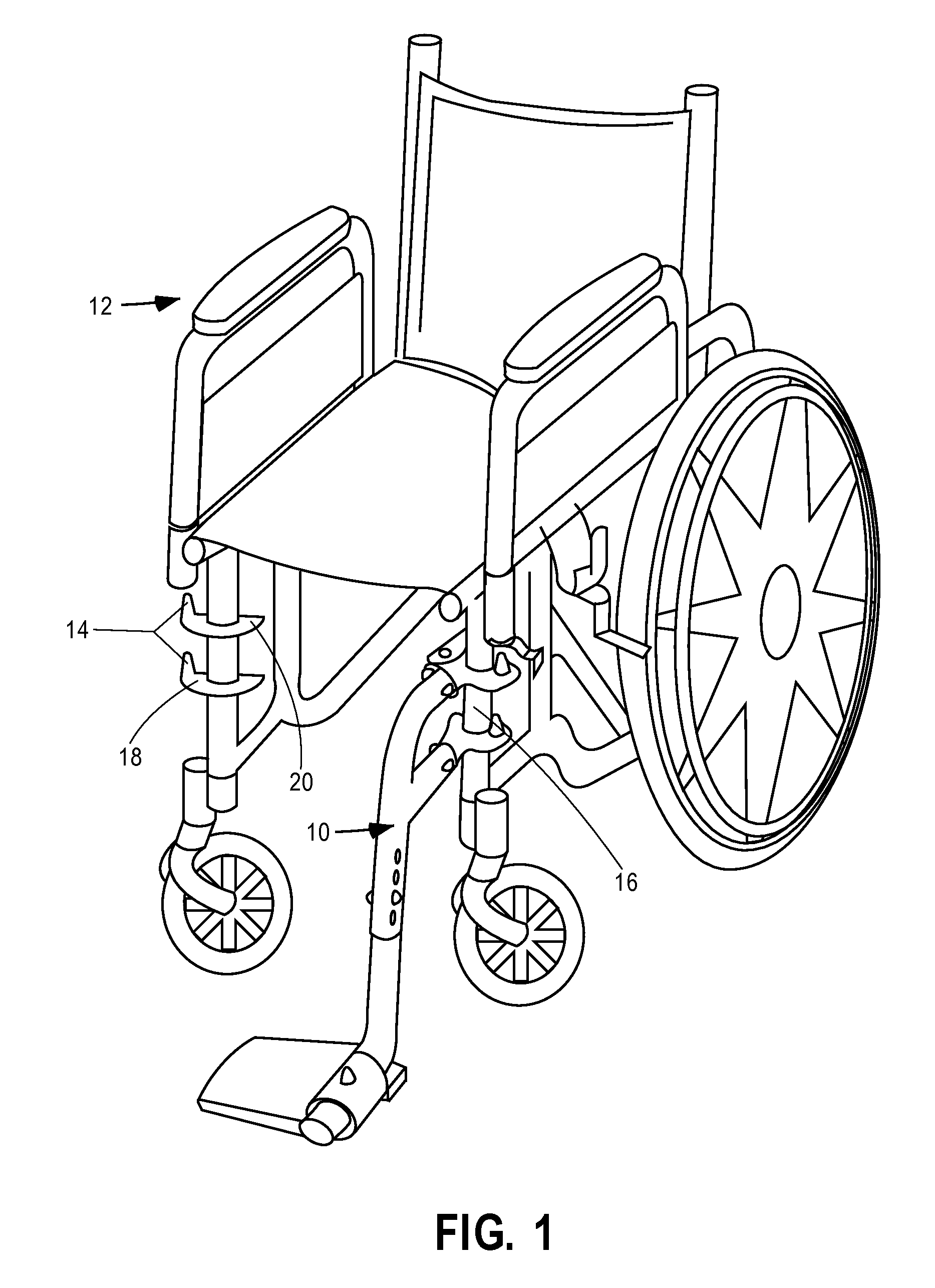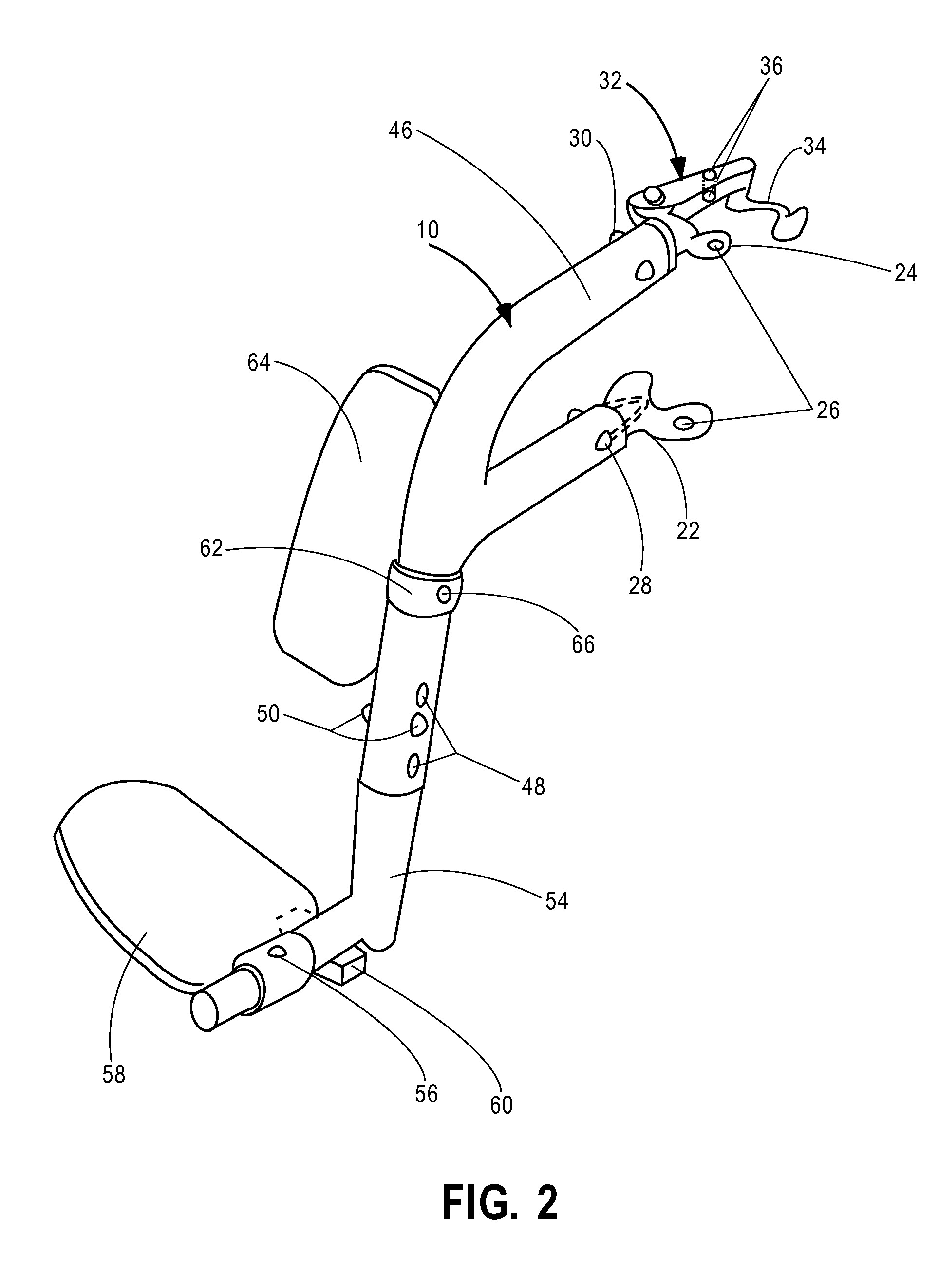Reversible footrest
a footrest and calf support technology, applied in the field of calf support, can solve the problems of difficult to locate the footrest for the wheelchair, the footrests for the wheelchair are not transported with the wheelchair, and the common problem of known footrests, so as to facilitate the use of calf support, facilitate the raising and lowering of the footrest, and facilitate the effect of safety and comfor
- Summary
- Abstract
- Description
- Claims
- Application Information
AI Technical Summary
Benefits of technology
Problems solved by technology
Method used
Image
Examples
Embodiment Construction
[0019]FIG. 1 illustrates a reversible footrest 10 provided on a typical wheelchair 12 according to one embodiment of the invention. The footrest 10 preferably attaches to a standard set of pins 14 provided on the wheelchair 12. The pins 14 are typically provided at a distance of either 1⅜″ or 3¼″ from each other, although other pin distances and attachment devices may be used. The set of pins 14 are located on one or both sides of the wheelchair 12 and supported by a tubular frame member 16, also on both sides of the wheelchair 12. A hinge plate 18 supports the footrest 10 when attached to the wheelchair 12. A notch 20 on the inside corner of the hinge plate 18 facilitates attachment of the footrest 10 to the wheelchair 12.
[0020]FIG. 2 illustrates first and second attachment mechanisms 22, 24 with a set of corresponding pivot holes 26 enabling connection to the wheelchair 12. The pins 14 insert into the pivot holes 26 thus securing and supporting the footrest 10, in conjunction with...
PUM
 Login to View More
Login to View More Abstract
Description
Claims
Application Information
 Login to View More
Login to View More - R&D
- Intellectual Property
- Life Sciences
- Materials
- Tech Scout
- Unparalleled Data Quality
- Higher Quality Content
- 60% Fewer Hallucinations
Browse by: Latest US Patents, China's latest patents, Technical Efficacy Thesaurus, Application Domain, Technology Topic, Popular Technical Reports.
© 2025 PatSnap. All rights reserved.Legal|Privacy policy|Modern Slavery Act Transparency Statement|Sitemap|About US| Contact US: help@patsnap.com



